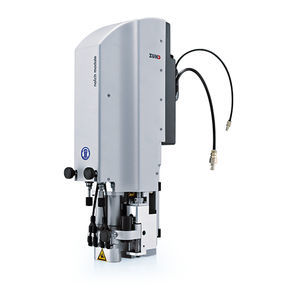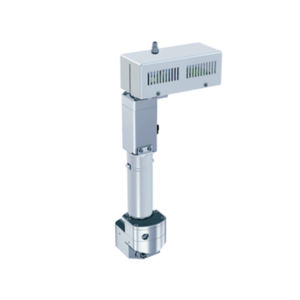
- Ship and boat building
- Production machines and tools
- Shipyard cutting tool
- Zünd Systemtechnik AG
Shipyard cutting tool EOT

Add to favorites
Compare this product
Characteristics
- Options
- for shipyards
Description
The Electric Oscillating Tool is suitable for cutting soft to medium-density materials. The high oscillating frequency enables high processing speed and efficient throughput.
Depending on the application, the EOT is available with 0.5 mm or 1.0 mm stroke. To accommodate different substrates and levels of detail, Zünd offers a wide range of both flat and pointed oscillating blades.
Depending on application, available with 0.5 mm or 1.0 mm stroke
Perfect for cutting detailed contours
Very high stroke frequency
High processing speeds
Compatible with G3, S3, D3, L3
Material
Rubber
Twin-wall sheets
Cardboard
Leather
Foam
The EOT is ideally suited for cutting softer,
multilayered materials. The high oscillating frequency of the EOT makes it possible to cut at
high processing speeds for superior throughput.
Depending on the application, the EOT is available with a 0.5 mm or 1 mm stroke. For
materials up to a thickness of 3 mm, Zünd recommends using the EOT with .5mm stroke;
thicker materials require the EOT with 1 mm stroke.
To accommodate different substrates and levels of detail in contour cuts, Zünd offers
a range of flat and pointed EOT blades. Flattipped blades tend to be better suited for
medium-density or fibrous materials and for relatively simple contour cuts with large radii.
The wide cutting edge allows for high processing speeds. Pointed blades are best for fine
detail and tight curves. For processing thicker, tougher materials, Zünd recommends using the POT (Pneumatic Oszillating Tool).
VIDEO
Catalogs
No catalogs are available for this product.
See all of Zünd Systemtechnik AG‘s catalogsRelated Searches
- Shipyard cutting machine
- Electric cutting machine
- Textile cutting machine
- Cutting table
- Shipyard cutting table
- CNC cutting table
- Shipyard cutting tool
- Pneumatic cutting machine
- Rubber cutting machine
- Leather cutting machine
- Shipyard software
- CNC cutting machine
- Nesting software
- Straight-knife cutting machine
- Sail loft software
- Visualization software
- Laser cutting machine
- Reporting software
- Foil cutting machine
*Prices are pre-tax. They exclude delivery charges and customs duties and do not include additional charges for installation or activation options. Prices are indicative only and may vary by country, with changes to the cost of raw materials and exchange rates.






























